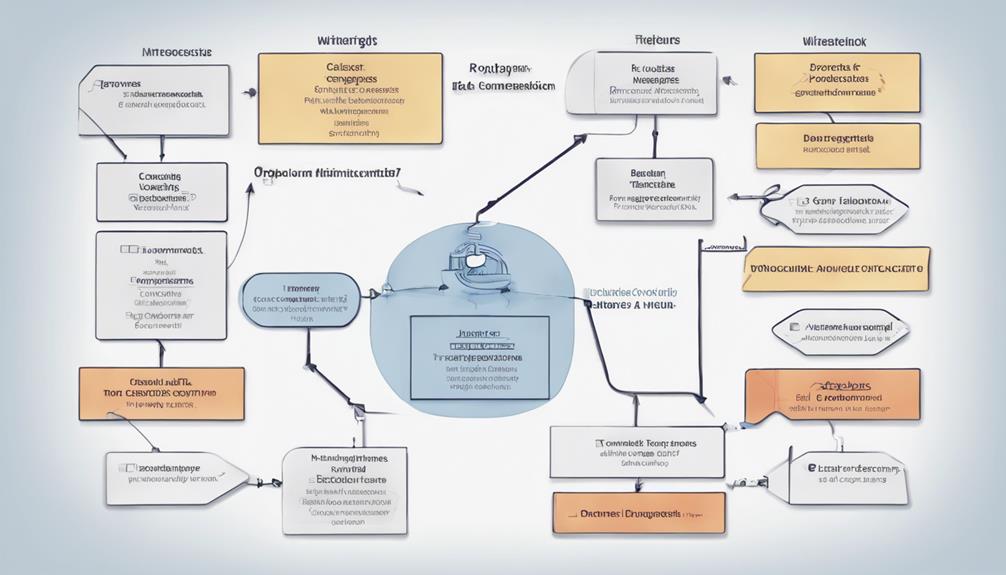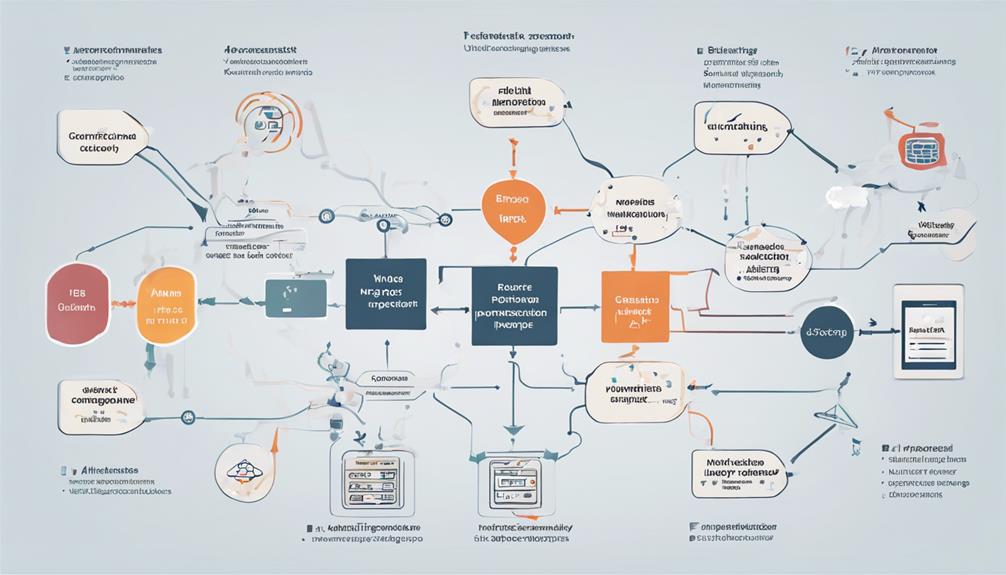If you're aiming to enhance operational efficiency and optimize IT processes within your organization, understanding the intricacies of efficient IT process integration is essential. By following a structured step-by-step guide, you can navigate through the complexities of identifying, mapping, analyzing, implementing automation tools, and monitoring processes. This systematic approach not only streamlines operations but also paves the way for improved service delivery and overall performance. Want to know how each step contributes to your organization's success?
Key Takeaways
- Map out IT processes meticulously for detailed understanding.
- Identify bottlenecks and redundancies within workflows.
- Implement automation tools to enhance operational efficiency.
- Monitor KPIs and optimize processes in real-time.
- Streamline workflows for improved efficiencies and customer satisfaction.
Identifying IT Processes

When beginning the process of identifying IT processes, you must meticulously map out all the various tasks and activities that contribute to the overall functioning of your IT department. Categorizing processes based on functions like software development, network management, security, and support is essential. Documenting each process with details on inputs, outputs, tools used, responsible individuals, and dependencies is vital for understanding the interconnections between different tasks and how they contribute to the overall IT infrastructure. This step lays the foundation for streamlining workflows, optimizing resource allocation, and identifying areas for automation and improvement within the IT department.
Mapping Current Workflows
To acquire a thorough understanding of your IT department's operations, you must now explore the process of mapping current workflows. Mapping current workflows involves documenting all the steps, activities, and interactions within the existing IT processes. It helps visualize the flow of data, tasks, and communication between different systems and departments. Detailed mapping identifies bottlenecks, redundancies, and areas for improvement in the current workflows. This mapping is essential for understanding the sequence of operations and dependencies in IT processes. By mapping current workflows, organizations can identify inefficiencies and streamline processes for better integration and efficiency.
- Identify all activities within IT processes
- Visualize data flow and communication interactions
- Uncover bottlenecks and redundancies
- Highlight areas for improvement
- Streamline processes for enhanced efficiencies
Analyzing Process Bottlenecks

As you explore the analysis of process bottlenecks, it is essential to pinpoint areas within workflows where work efficiency is obstructed or slowed down. Process bottlenecks are critical points in a workflow where the smooth flow of work is impeded, leading to decreased workflow efficiency. By investigating these bottlenecks, you can uncover improvement opportunities to enhance productivity and operations optimization. Common causes of process bottlenecks include resource constraints, inefficient task sequencing, and the absence of automation.
To analyze process bottlenecks effectively, examine data related to task completion times, resource utilization, and workflow dependencies. Understanding these factors can help you address the root causes of bottlenecks and streamline workflow processes. Resolving process bottlenecks can result in smoother operations, faster task completion, and an overall productivity enhancement. By focusing on eliminating these obstacles, you pave the way for a more efficient and effective workflow that meets the demands of your IT processes.
What Are the Steps for Integrating IT Processes With Software Solutions?
Integrating IT processes with software solutions involves several crucial steps to ensure seamless implementation. Firstly, assess current system requirements. Next, establish clear objectives and select appropriate software. After that, customize the software to align with organizational needs. Lastly, train employees to utilize the system effectively, thereby maximizing integrated IT software solutions.
Implementing Automation Tools
Pinpoint how automation tools, such as robotic process automation (RPA), can revolutionize IT processes by streamlining repetitive tasks and enhancing operational efficiency. By introducing robotic automation into your system integration, you can drive a more efficient business environment. Here's how automation tools can benefit your IT processes:
- Reduce Errors: Automation tools help minimize errors within your existing processes, ensuring greater accuracy.
- Enhance Operational Efficiency: Implementing automation tools can markedly reduce processing time, leading to increased operational efficiency.
- Focus on Strategic Initiatives: By automating routine tasks, your IT team can concentrate on more strategic initiatives and innovation.
- Cost Savings: Utilizing automation tools can result in cost savings through reduced manual effort and increased productivity.
- Improved Service Delivery: Automation tools not only save time but also enhance service delivery, improving overall customer satisfaction.
Evaluate how automation tools fit into your IT processes for improved efficiency and effectiveness.
Monitoring and Optimizing Processes

Monitoring and optimizing processes entail tracking key performance indicators (KPIs) to guarantee efficiency and effectiveness while using tools like observability, log analytics, and AIOps to identify and address process bottlenecks. Efficient processes rely on continuous monitoring to make sure they are performing at peak efficiency. By defining processes clearly and implementing custom monitoring dashboards, you gain real-time visibility into performance and can address issues promptly. Through continuous monitoring, adjustments can be made swiftly, optimizing processes and maintaining efficiency levels. Monitoring processes is essential for improving operational outcomes, minimizing errors, and enhancing overall productivity. With the right tools and a proactive approach to monitoring, you can streamline operations, identify areas for improvement, and make sure that your processes are running smoothly to achieve the desired outcomes efficiently.
